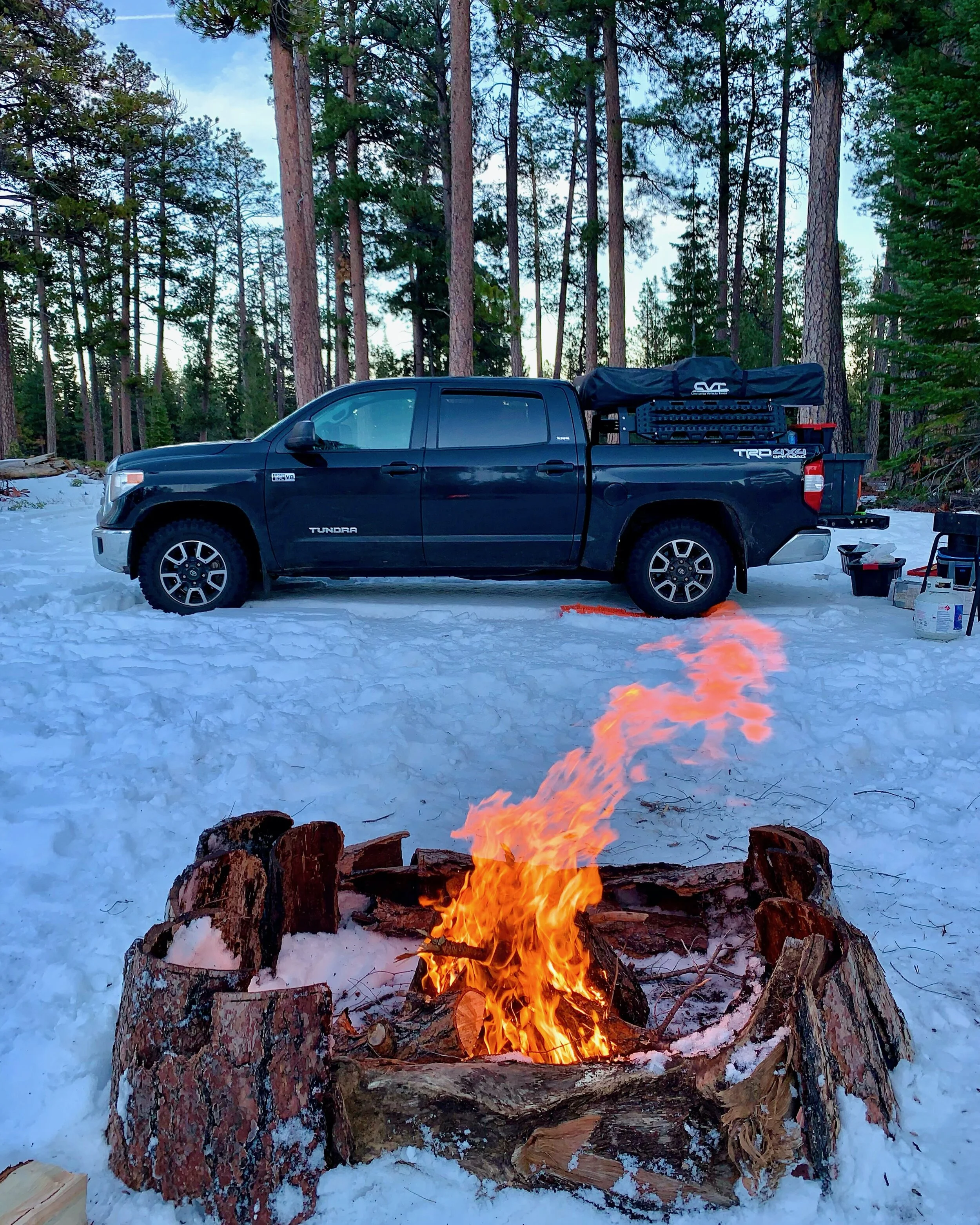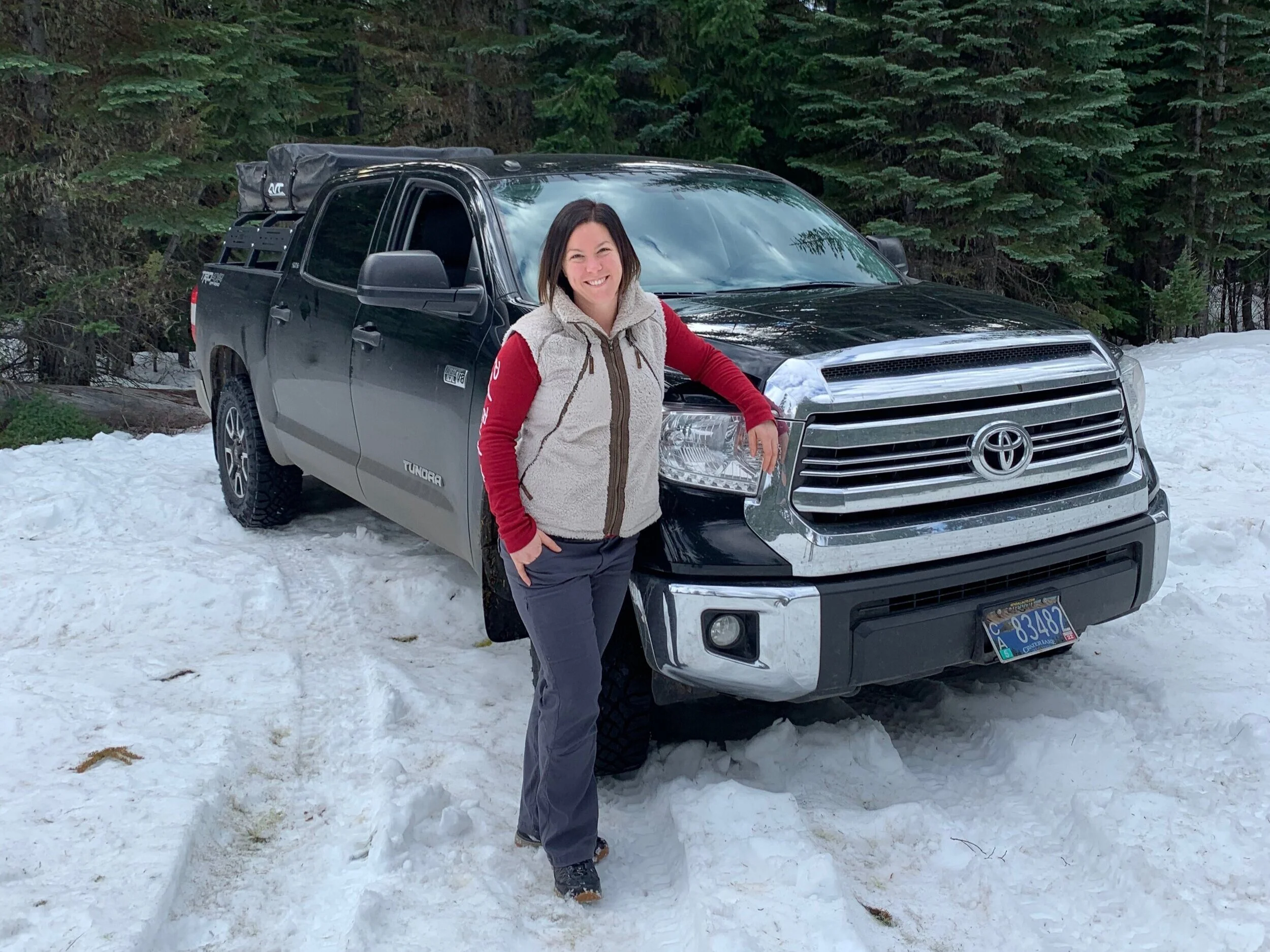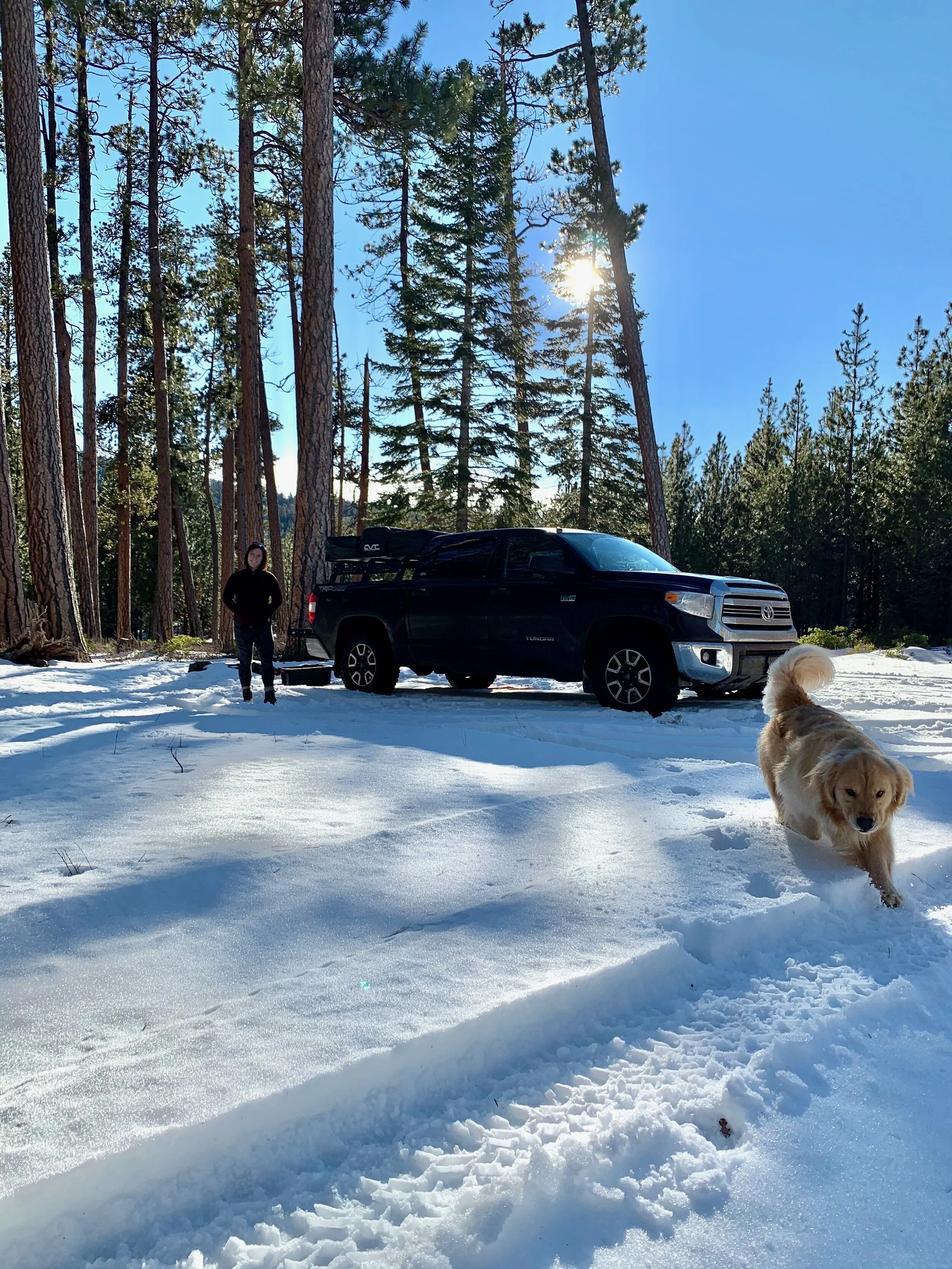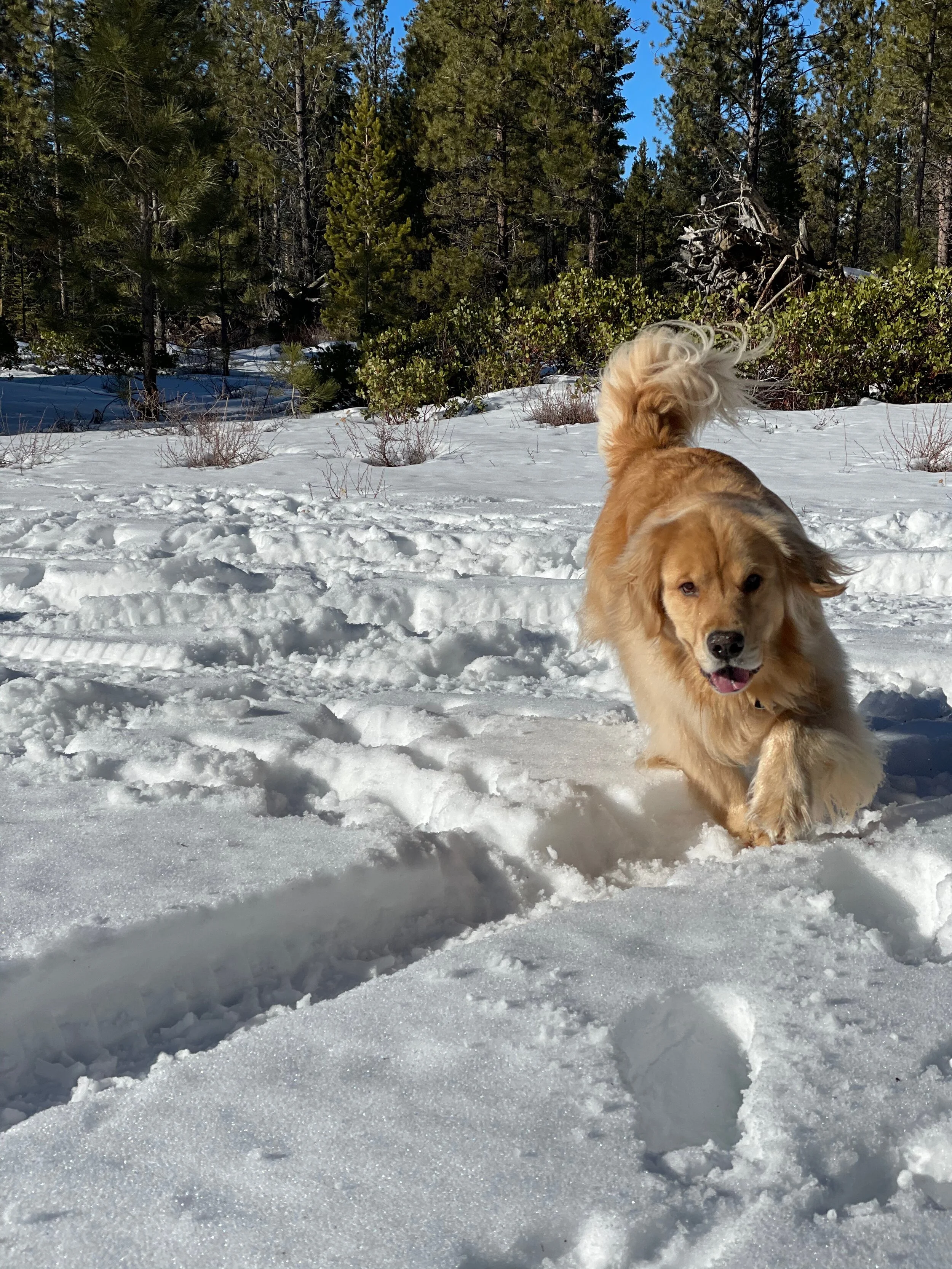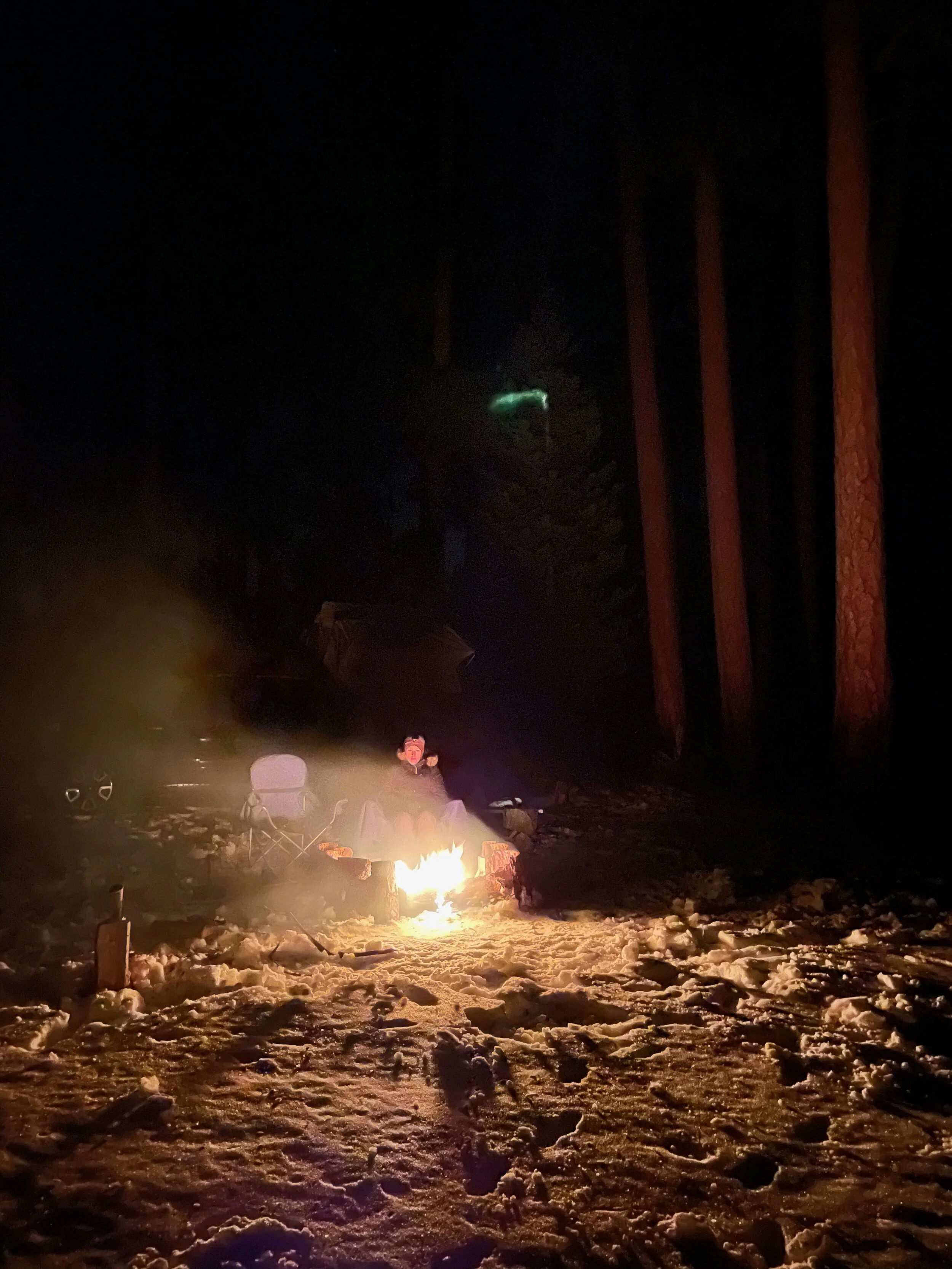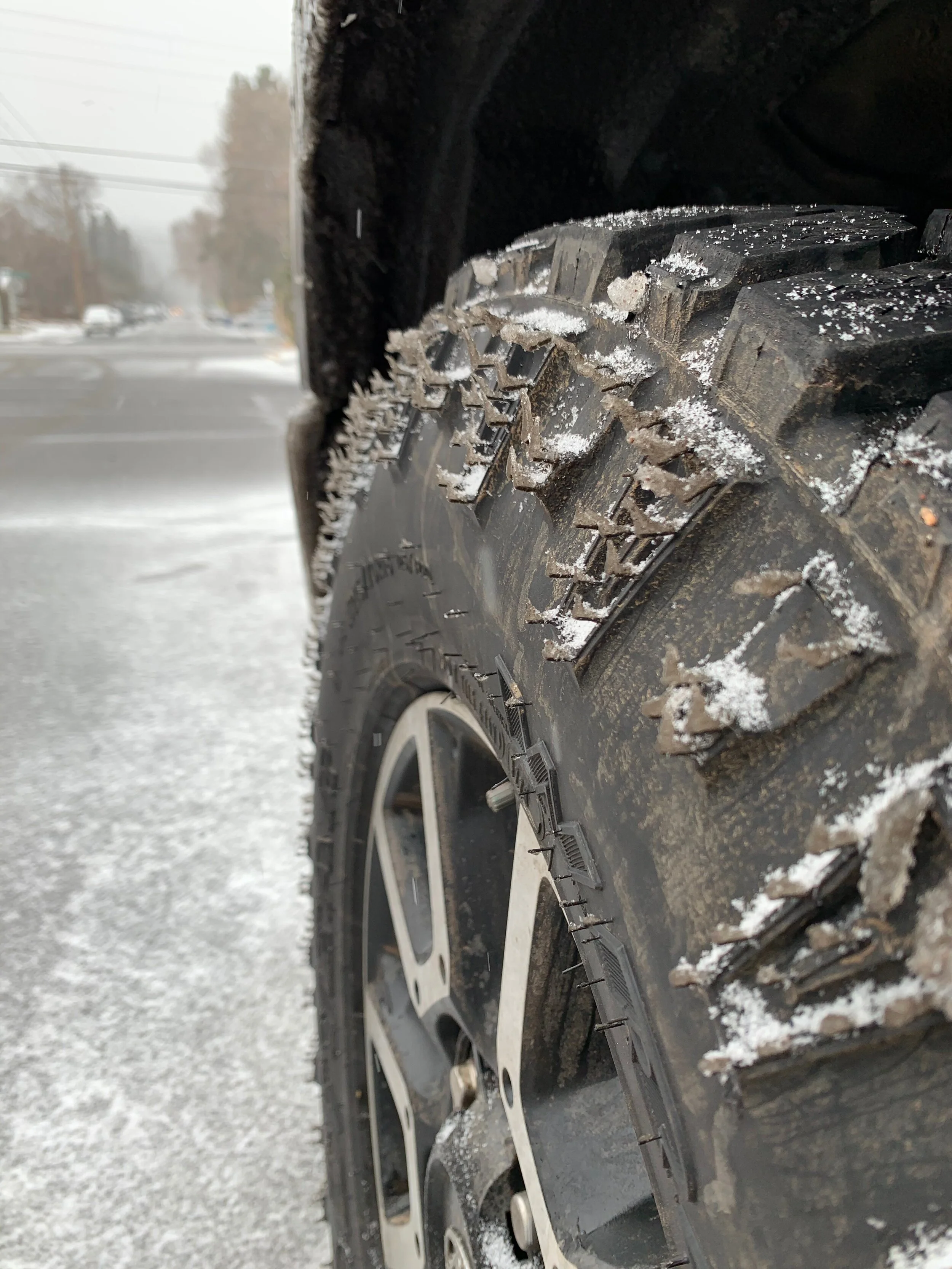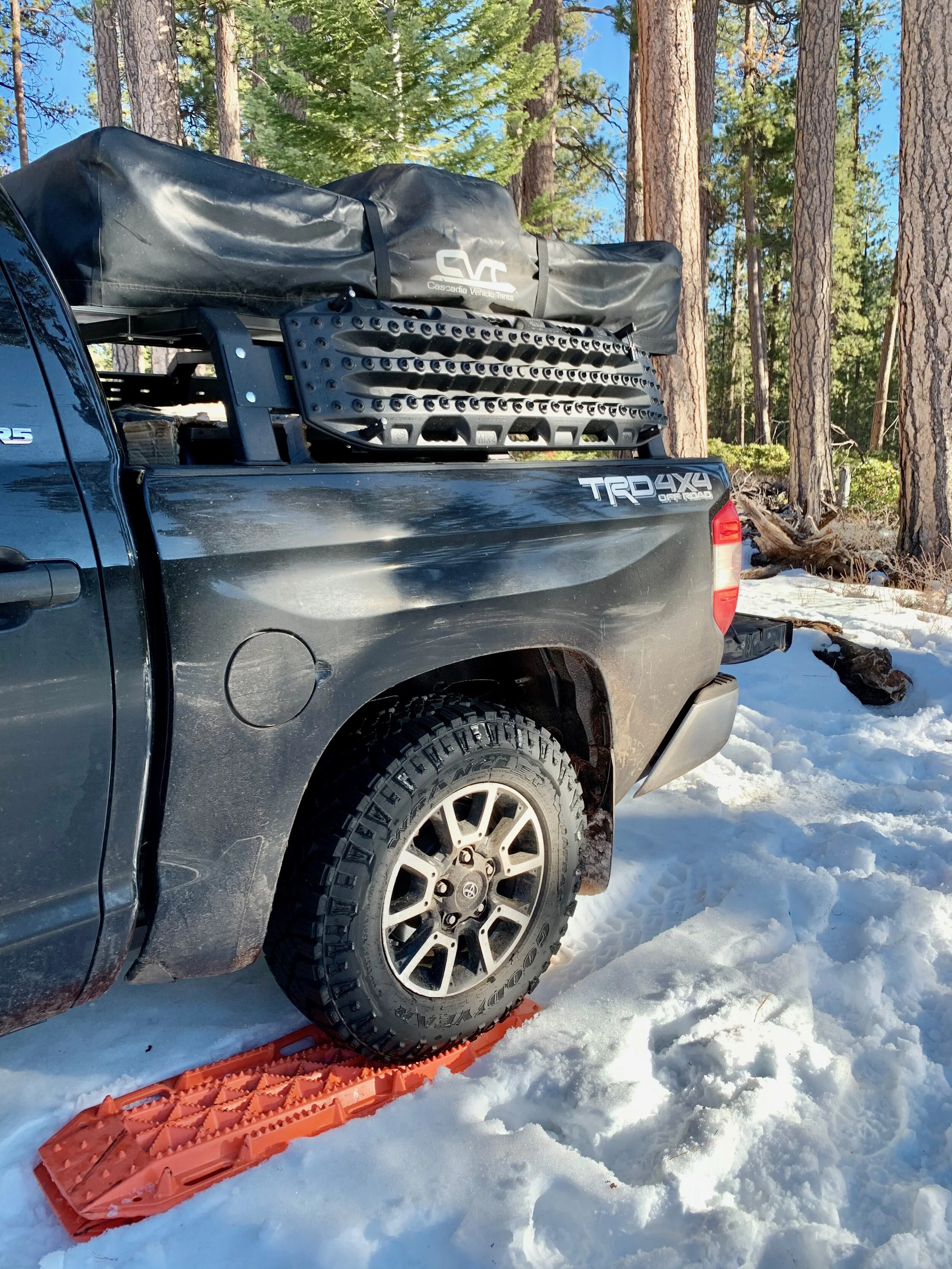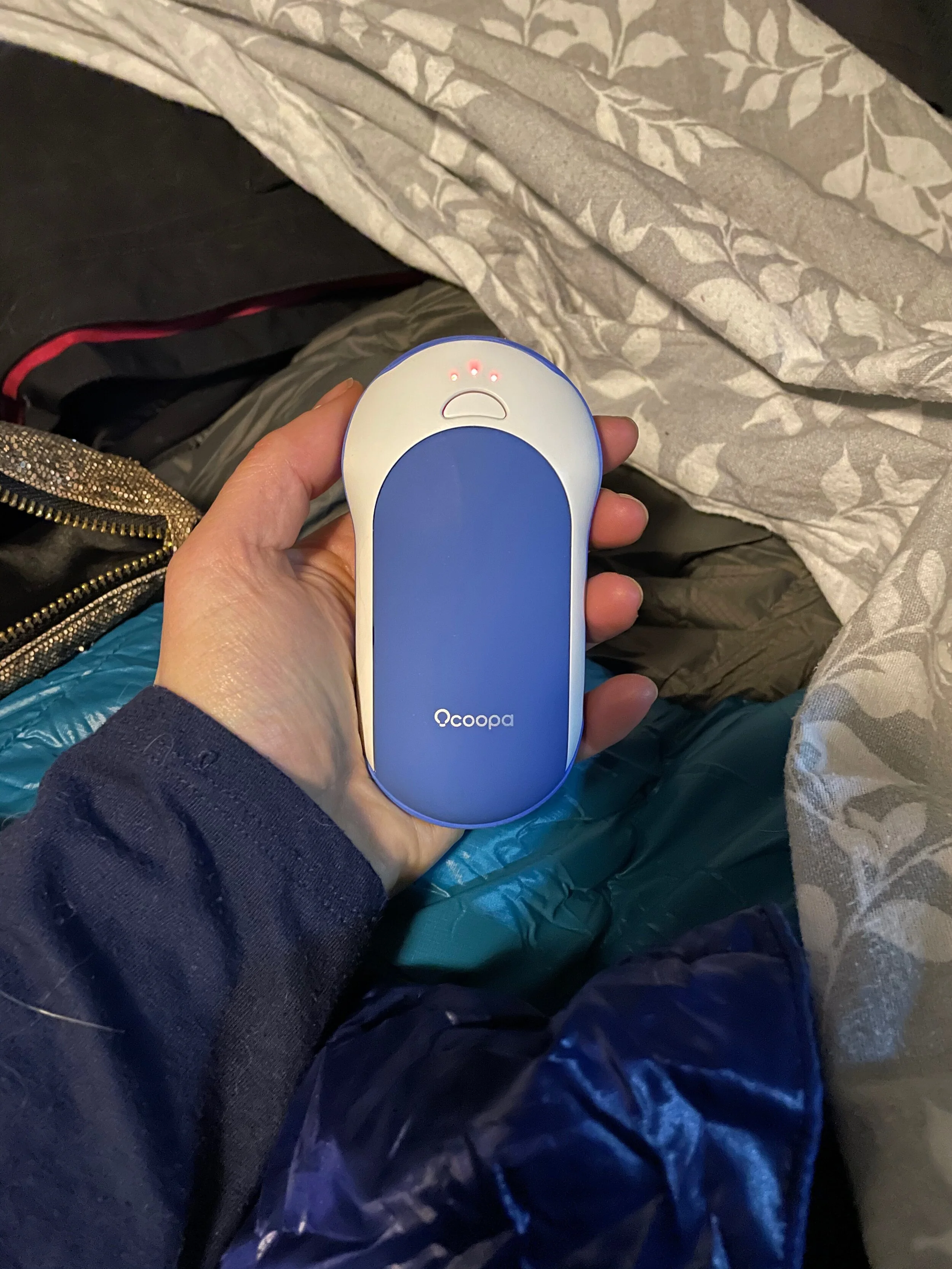Snow Camping
Don’t let the cold keep you away! With the right gear and mindset camping in the winter can be a blast.
Over the course of our relationship Tessa and I have continued to step outside of our comfort zones in the outdoors. Each year we have progressively spent more nights outside, taken longer unsupported trips, and upped the anti on remoteness. Still, there has been one barrier that we had not crossed together: camping in the winter.
I had some experience snow camping as a search and rescue volunteer back in high school, but for Tessa this was a completely new experience. Naturally there is some trepidation involved with spending a night outside in the winter. Cold weather can range from uncomfortable to dangerous depending on the conditions and your level of preparedness. Additionally driving in the snow comes with its own challenges, and there is always the risk that and overnight storm will dump enough snow to make return travel difficult.
Any anxiety aside, we were committed to giving it a go. At its best snow camping can provide levels of solitude and beauty that you just wont find in the summer months. It can also give you a sense of accomplishment by doing something that many campers refuse to try.
Snow camping planning and preparations
We have worked hard over the last couple years to acquire the appropriate gear and adequately prepare our vehicle for the demands of cold weather camping. Each of us owns a mix of high loft and waterproof layers to keep us comfy outside, and cold weather down sleeping bags to get us safely through the night. Recently the Tundra got a slightly oversized set of Goodyear Duratrac AT tires that are excellent in deep snow, and the CVT roof top tent that sits on the back also qualifies as a true four season tent (unlike most ground tents on the market). With all of this gear we felt amply prepared for our first trip.
Picking a place to camp in is a hugely important part of the snow camping equation. For this trip we reached out to friends and like minded Instagramers for advice on where to go, and scoured data from Caltopo.com. Ultimately we settled on an area south of Sisters, Oregon to look for a spot in a ponderosa pine grove. Snow levels are constantly changing during the winter months, and one of the benefits of this location was a well plowed main access road, and a large selection of trails to explore through public lands at different elevations. That way if a blizzard came through before our trip all we would have to do is look at lower elevations to find a safe spot to camp.
When it comes to meals we usually plan on cooking most of our own food, since doing so saves money and is typically healthier than eating out. For our first venture into snow camping we took an alternative approach. Tessa pre-made a white chicken chili for dinner, but lunch on day one and breakfast on day two would be takeout. That would allow us to leave our Dometic fridge at home, and save a lot of time in the morning so that we could get home quickly to watch Tom Brady get his 7th ring.
The last piece of our planning puzzle was weather. We were hoping for a sunny weekend, but could have settled for a snowy one. What we wanted to avoid more than anything was the potential for a warm front to come through and rain on us. There are few conditions that I can think of that are more miserable than getting pelted with cold rain in the snow! After weeks of watching the weather we finally had a sunny window to get out on Super Bowl Weekend… unfortunately we neglected to watch the wind levels, an oversight that would prove to be challenging on our trip!
Finding a camping spot
On Saturday morning we managed to only be an hour late getting out of town (a real accomplishment for us when it has been awhile since our last trip). After an easy bare pavement drive over highway 126 we popped into the town of Sisters for coffee and a bathroom break. If you haven’t been to Sisters it is basically an old cowboy town turned cute adventure hub. We adore the place and can’t help but stop at Sisters Coffee Company for spendy but delicious drinks and pastries. Naturally it would also be our breakfast stop the next morning.
Leaving Sisters behind we headed south, gaining elevation as we approached the base of the Three Sisters Mountains. A few miles after hitting the snow line we turned off the plowed paved road into the Deschutes National Forest. Normally on trips like this we have a few possible campsites marked on the Gaia GPS app, but this time with a massive maze of roads to explore we decided to wing it. In the process of looking for a good spot to set up shop we found ourselves on top of a small butte. In a foolish attempt to find a better view we climbed a cinder slope to the very top. I still had my street shoes on, and paid the price for that decision with an unplanned slide on the way down. With road rash on my palms, and a nasty bruise on my thigh I committed to throwing boots on much earlier next time. There were spots to camp at the top of the butte, but we decided to head for lower ground since it was utterly exposed to high winds.
Snow can take a pretty average forest and make it spectacular.
Dropping back into the protected woods we spent the next 45 minutes snaking through narrow forrest roads looking for an appropriate pullout to spend the night in. On the way we encountered several cars that were very lost, and a number of downed trees blocking roads. We had our chainsaw ready, but decided it would be much faster and safer to find a detour. We struck out a lot, and just as we were starting to get discouraged a lovely clearing presented itself, flanked by large ponderosa pines.
Setting up camp in the snow
With our spot picked out we set about getting our little camp put together. The first order of business when roof top tent camping is getting the truck level so that you don’t roll around too much in the middle of the night. This process can be pretty tedious and is one of the major cons of RTT camping. Picking a level spot to begin with is ideal, but when that doesn’t work out your best options are to strategically place traction boards to raise some wheels, while digging holes to lower others (just make sure that doing so doesn’t damage the site).
Next, we went to work shoveling out or stomping down the snow immediately around our cooking area and fire pit. This step makes it a lot easier to walk around camp without snow over flowing into the top of your boots! If you can dig all the way down to the soil that is ideal, otherwise you run the risk of creating an iceskating rink when the temps drop (we may have learned this the hard way haha).
While we were busy getting camp together Porter was having a blast. He absolutely comes alive in the snow and could hardly contain his excitement running all over the place. Occasionally he explores a little too far for our liking, but is usually pretty good about bounding back to mom and dad when we call.
For this trip we brought some firewood from a local vendor just in case there weren’t any dry trees to buck up near our camp. Fortunately we found a few fallen ponderosas to buck up that weren’t totally water logged. As a side note, most federal public lands allow (and actually encourage) you to harvest camp wood from dead trees, as long as they are not still standing. The best firewood trees are suspended off the ground or in some way protected from getting wet.
Tessa enjoying her new parka, and handy work with the fire pit.
While I was running my saw Tessa went to work improving our fire ring. To shield our fire from the high winds she surrounded the ring with ponderosa bark. In the summer months this would be very dangerous since the bark would likely combust and jump the fire out of the ring, but the risk of that was minimal on this trip as the bark was encased in ice.
Campfires and windstorms
By the the time I got the fire going we were very ready to eat. Tessa’s white chicken chili heated up in a hurry on our Camp Chef two burner stove, and before you know it we were doing our best to scarf our dinner before the freezing air took all of the heat out of it… which is why we don’t have any food pictures on this trip…
The sky turned pink as we settled in around the fire, with one of the Three Sisters just barely poking out between the trees. Winter is dark beer season, and the Chocolate Porter from Three Creeks Brewing (aptly named for where we were) hit the spot just right. As the light faded and the chill increased we added layers and switched to hot drinks. It may sound a little unorthodox at first, but hot chocolate and bourbon are delicious together. I’m normally not one to suggest that anyone ruin good bourbon with something so sugary, but that combination really brings out the vanilla notes in the whiskey, while warming your body and your soul!
When the stars came out we took the opportunity to test out the low light photography capabilities on Tessa’s new iPhone 12 Pro. Considering that we did not have a tripod handy these came out surprisingly well!
About an hour before bedtime a gust of wind came through while we were sitting around the fire. We heard a loud clunk, and turned around to find that our tent had folded over in the wind. Nothing was damaged, but the event did not bode well for our prospects of sleeping through the night. We did our best to strap the overhanging portion of the tent down to heavy items, and reset our bedding. A major key to staying warm in an RTT is underbody insulation. Before pulling your sleeping bags out it is helpful to throw down a blanket or two over the mattress pad. On this trip we also brought a couple blankets to throw on top, and a sheet to protect our bags from Porter’s sharp claws.
As the windchill got colder we decided to put out the fire and call it a night. The bedtime ritual with an RTT and a nearly 80 pound Golden Retriever is admittedly a comical one. Porter is basically an oversized teddybear when you pick him up. Getting him off the ground isn’t so bad on its own, but raising him into the tent requires a couple very precarious steps on the slick ladder. The effort is worth it though, as he is visibly happy to be with mom and dad and not have to sleep in a crate on his own. With Porter up we settled in, but a cozy night in our truck mounted treehouse was not to be. Checkout the brief review on our CVT below to see how that ended…
Gear reviews
For better or worse a few items really stood out on this trip.
Goodyear Wrangler Duratrac 275/70 R18 Tires
I’ll share a more comprehensive review on these tires down the line, but their performance on this trip was really worth mentioning. Tessa has been running Duratracs on her 4Runner for the last several years and really loved them, so when it came time to replace the Cooper ST Maxx tires on the Tundra I decided to give them a try. Unlike the ST Maxx the Duratracs are mountain snowflake rated, which means you can generally drive them over mountain passes without having to worry about chaining up in all but the worst of conditions. Considering how much time we spend in the mountains that benefit was very attractive.
So far the Duratracs have performed solidly on pavement, but really shine when they hit the white stuff. We didn’t even air down for this camping trip (normally we’d drop to 12-20 PSI in the snow) and they still performed beautifully in 8+ inches of snow and some very slick icy spots. We’ll keep you posted on how they hold up with our heavy truck, but so far they appear to be a great choice if you are looking for a more aggressive AT tire.
CVT Mt. Rainier Roof Top Tent
We’ve had this tent for three years now and it has served as our home away from home in a wide variety of environments. It has enabled us to spend way more nights in the woods than we ever did in a ground tent. We sleep a lot better in the CVT largely due to the memory foam mattress, and the perception of increased safety that comes from being off the ground. Its thicker canvass also insulates from the cold a lot better than a traditional nylon tent.
We didn’t get a chance to test our new Maxtrax on this trip, but will soon! For ventures into the snow we will continue to bring our knockoffs with us in case we need 4 boards to get us unstuck.
Despite these positives RTTs still have a critical weakness that we cannot overcome: wind. When properly tied down (we recommend replacing the included ropes with proper ratchet straps) an RTT can safely manage to withstand reasonably high winds, but that does not mean that you will be comfortable sleeping inside as storms roll through. The flapping of excess fly material has driven us mad through several long nights.
While we were warm in comfortable in the CVT on this snow camping trip high wind gusts kept shaking the entire tent and preventing us from falling asleep. At around midnight we made the call to abandon ship and bail to the cab of the Tundra. We look forward to giving the CVT another shot at snow camping, but wont do so unless the forecast calls for minimal wind.
Fjallraven Nuuk
In Tessa’s words: “This coat is the purchase that I should have made when I moved to Oregon 6 years ago. On most camping trips, I usually hit a point of being cold, despite wearing multiple fleece and puffy layers. On this trip, I only experienced cold if I unzipped my jacket. The Fjallraven lived up to it’s windproof sales pitch and kept me warm and cozy when I only had a base layer and long sleeve on underneath. With the hood up, I could comfortably sit by the fire in 26 degree weather with 20-30 mph winds and not be cold.
If you get cold easily in the winter or on camping trips I could not recommend this jacket more. Fjallraven did a beautiful job of blending style (because let’s face it we still want to look cute while looking like a snowman) and function. This will be a coat I will treasure for many years.”
Ocoopa Handwarmer
This little gadget came highly recommended from Donald over at Softroading the West. This thing gets seriously toasty for hours, and avoids the waste associated with single use chemical hand-warmers. Use it in a pocket during the day, or throw it in the bottom of your sleeping bag at night to cut the chill on your feet. Be careful with the heat settings though, the top one is boarder line too hot without gloves on.
We want to hear from you!
Comment below of shoot us a message if you have questions or feedback on this post!
